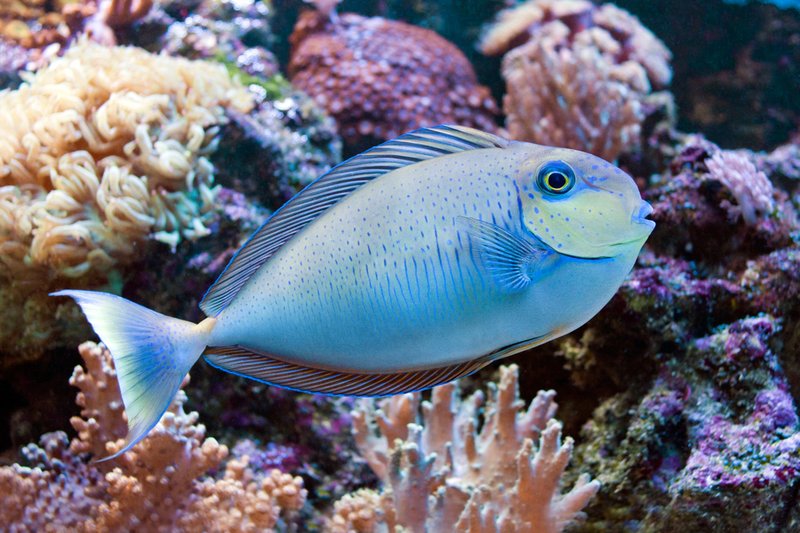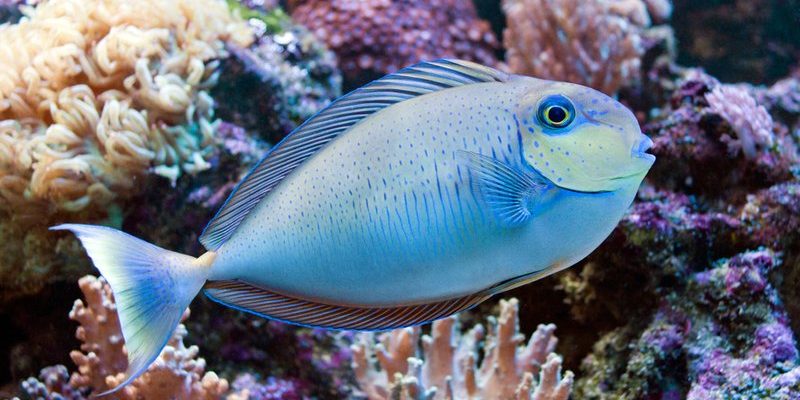
Breeding the Vlamingii Tang can be both exciting and challenging. These fish have specific requirements when it comes to conditions, tank mates, and even diet. If you’re set on nurturing new lives in your aquarium, you’ll want to know how to create the right environment. Let’s break down everything you need to know about the breeding and reproduction of the Vlamingii Tang, so you can feel like a pro before you even begin!
Understanding the Vlamingii Tang
Before we dive into breeding, let’s get to know the Vlamingii Tang a bit better. This fish, also known as the Vlaming’s Unicornfish, is native to the reefs of the Indo-Pacific. They’re renowned for their vibrant blue and yellow coloration, which captures the eye of anyone who sees them gliding gracefully through the water. But there’s more to these fish than just their looks; they play a vital role in maintaining the health of coral reefs by grazing on algae.
One key characteristic of the Vlamingii Tang is its social nature. They’re often found in small schools, which can make them quite interactive with other fish in your aquarium. However, while they thrive in groups, you’ll want to keep in mind that breeding often requires selecting specific pairings. Their social behaviors can significantly influence their readiness to breed, so understanding them will give you a solid foundation.
You might be wondering, “What about their diet?” Well, Vlamingii Tangs are herbivores, and they require a steady diet of algae, seaweed, and plant-based foods to stay healthy and ready for breeding. This brings us to the next crucial part of the breeding process: creating the right environment.
Creating the Perfect Environment for Breeding
The first step in successfully breeding Vlamingii Tangs is setting up a suitable environment. Think of it like preparing a cozy nest for your fish—everything needs to be just right. Ideally, you should have a dedicated breeding tank separate from your main aquarium. This reduces stress for the fish and allows you to manage water parameters more precisely.
Here are some essential elements to consider when setting up your breeding tank:
- Water Quality: Maintain stable temperature (around 76-82°F) and salinity (1.020-1.025 specific gravity). Regular water changes and good filtration are key.
- Tank Size: A minimum of 75 gallons is recommended. These fish need space to swim and feel secure.
- Hiding Places: Adding rocks, caves, and plants can help the fish feel more comfortable. This mimics their natural habitat and encourages spawning behavior.
Once the environment is primed, you’ll also want to monitor the tank’s pH level. A range of 8.1 to 8.4 is ideal. Keeping these conditions stable is crucial, as any fluctuations can stress the fish and disrupt their breeding process.
Selecting Compatible Tank Mates
Now that your breeding tank is ready, let’s talk about companions. While the Vlamingii Tang can get along with many fish, picking the right tank mates plays a vital role in their breeding success. Ideally, you want to minimize aggression and stress in the tank.
Here’s what to look for:
- Non-aggressive species: Consider peaceful fish that won’t stress the Vlamingii Tang. Avoid overly aggressive tank mates that could cause stress and disrupt breeding.
- Slightly larger fish: Sometimes, larger fish can help balance the dynamics in the tank, but choose wisely to avoid any harm.
- Compatible schooling fish: Adding a school of peaceful fish can create a more natural environment, which can encourage the Vlamingii Tangs to feel at home.
Be cautious with other tangs or similar species, as they could compete for territory and cause stress. The last thing you want is to inadvertently create a hostile environment when you’re trying to promote breeding!
Nutrition: Fueling the Reproductive Process
A well-rounded diet is crucial for breeding Vlamingii Tangs. Think of it as providing them with the best ingredients for a gourmet meal. A healthy diet doesn’t just help them grow strong; it also boosts their reproductive potential.
To ensure your Vlamingii Tang is ready for breeding, focus on these food types:
- Marine algae: Offer a variety of dried seaweeds like nori, which they love to graze on.
- Pelleted foods: High-quality herbivore pellets can provide essential nutrients.
- Fresh greens: Spinach and lettuce can also be appealing. Just make sure to rinse them thoroughly before feeding.
It’s essential to feed your fish a diverse diet, as this can enhance their health and breeding readiness. Pay attention to how they respond to different foods, and adjust their diet accordingly. Healthy, well-fed fish are more likely to spawn successfully!
Breeding Behavior of Vlamingii Tangs
Vlamingii Tangs have a fascinating courtship ritual. This is where things get interesting! When they’re ready to breed, you may notice changes in their behavior—think of it as a dance. The male will often display his vibrant colors and swim closely around the female, nudging her gently as part of the courtship.
In the wild, these fish typically spawn at dawn. In your aquarium, you can encourage this behavior by simulating these conditions. Lowering the light before spawning can help trigger this natural response. During the spawning process, the female will release her eggs into the water column, and the male will follow closely behind to fertilize them.
It’s crucial to keep an eye on the tank during this time. Ensure that the water parameters remain stable, as any stress during this process can lead to unsuccessful breeding.
After the Eggs: Caring for Fry
Once the eggs are fertilized, it’s time to think about caring for the fry. This phase is critical, as newly hatched fry are incredibly delicate. Typically, the eggs will hatch within 24 to 48 hours, depending on temperature and water conditions.
Here’s what you need to do:
- Maintain clean water: Keep the breeding tank’s water pristine to prevent any potential diseases.
- Provide suitable food: Newly hatched fry will need infusoria or specially formulated fry food until they grow larger and can eat more substantial foods.
- Monitor growth: As the fry grow, slowly introduce them to more varied diets, including finely crushed flake foods and brine shrimp.
Raising fry can be a long-term commitment, and it requires careful attention. However, watching them grow and flourish is one of the most rewarding parts of breeding.
Common Challenges in Breeding Vlamingii Tangs
Like any hobby, breeding Vlamingii Tangs comes with its own set of challenges. One common issue is stress among the fish. Whether it’s due to aggressive tank mates or unstable water conditions, stress can derail the breeding process.
Here are a couple of challenges to keep in mind:
- Compatibility issues: Sometimes, selecting the right pair can be tricky. It may take a few tries to find the optimal match that can breed successfully together.
- Environmental stress: Fluctuations in water quality or temperature can negatively affect the breeding process. Consistent monitoring is essential.
Remember, patience is key. Breeding can take time, and not every attempt will result in successful spawning. But with the right setup and care, you will increase your chances of success.
In conclusion, breeding the Vlamingii Tang involves a combination of understanding their needs, providing a nurturing environment, and being prepared for the challenges that come your way. With the right approach, you’ll be able to enjoy the delightful experience of watching your fish thrive and potentially welcoming new fry into your aquarium. Happy breeding!

